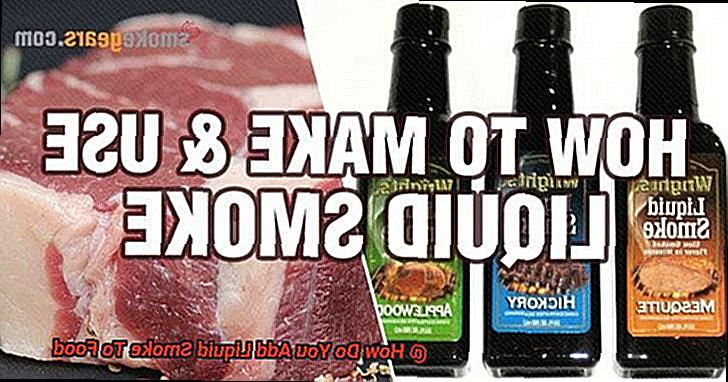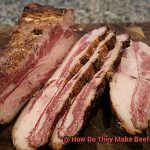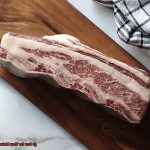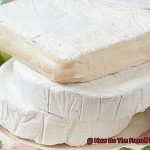Are you a fan of that smoky flavor in your food but don’t have access to a smoker or grill? Fear not, because liquid smoke is here to save the day. This flavoring agent adds a deliciously smoky taste to your dishes without the need for traditional smoking techniques. It’s made by burning wood chips or sawdust, condensing the smoke, and dissolving it in water. Liquid smoke is incredibly versatile and can be added to a wide range of dishes, but how do you use it without overpowering the taste?
Adding liquid smoke requires balance and restraint. You don’t want the smokiness to take over your dish, but you also don’t want it to go unnoticed. There are several ways to add liquid smoke to your food, such as marinades, sauces, rubs, brines or even directly while cooking. The key is starting with small amounts and adjusting according to your taste.
Whether you’re grilling, baking or slow-cooking, liquid smoke can add an extra depth of flavor that will make your dishes stand out. In this post, we’ll delve into detail on how to add liquid smoke properly so that you achieve the perfect smoky flavor without going overboard. We’ll cover different methods and give you tips on how much to use and when to use it.
With this guide at hand, you can elevate the flavor of your dishes and impress friends and family with professional-level cooking skills. So let’s dive into the world of liquid smoke together.
Contents
What is Liquid Smoke?
Liquid Smoke is a concentrated flavoring agent made by burning wood chips and capturing the resulting smoke in water, which is then condensed into a liquid form. The process of making Liquid Smoke involves burning different types of wood chips, such as hickory, mesquite, applewood, and oak. Each type of wood chip adds a unique flavor to the final product, allowing for a variety of smoky flavors to be created.
One of the great things about Liquid Smoke is its versatility. It can be used in a wide range of dishes, from classic barbecue sauces and marinades for meat to vegetarian and vegan dishes that need that extra smoky flavor.
There are several ways to use Liquid Smoke depending on the dish you’re making and how strong you want the smoky flavor to be. One popular method is to mix it into marinades or dry rubs before cooking, allowing the flavor to infuse into the meat or vegetables. Another option is to add it to sauces or dressings for a unique smoky twist that pairs well with barbeque dishes or even salads. And if you’re grilling or smoking meat, you can use a spray bottle to mist diluted Liquid Smoke onto the meat as it cooks, giving it that delicious smoky taste.
It’s important to note that Liquid Smoke is very potent, so it should be used in moderation as it can easily overpower other flavors. Also, be sure to choose the right wood chips for your desired flavor. Different types of wood chips will yield different flavors, so experiment until you find your perfect combination.
Adding Liquid Smoke to Marinades and Dry Rubs
Look no further than the magic of liquid smoke. Adding liquid smoke to marinades and dry rubs is a simple way to infuse a smoky flavor into your dishes without having to fire up the grill or smoker. As an expert in this technique, I am excited to share some tips and tricks for achieving mouth-watering, flavorful meats.
When using liquid smoke in a marinade, start with a small amount and adjust to your personal preference. A little bit goes a long way, and too much can overpower the other flavors in the dish. For dry rubs, mix the liquid smoke with your favorite spices and seasonings for a delicious smoky crust on the outside of your meat. Don’t be afraid to experiment with different blends until you find the perfect combination for your taste buds.
It’s important to note that liquid smoke should not replace actual smoking or grilling. Rather, it’s a simple way to enhance the smoky flavor in dishes that may not have been cooked over wood or charcoal. Liquid smoke pairs well with complementary flavors like garlic, onion, paprika, and honey. When using it in marinades and dry rubs, consider the other flavors present in the dish and adjust accordingly.
When cooking for others who may not be as fond of smoky flavors, use liquid smoke sparingly. Start with a small amount and adjust as needed so that everyone at the table can enjoy the dish. With these tips in mind, you’ll be able to create deliciously smoky dishes that will have everyone asking for seconds.
Adding Liquid Smoke to Sauces and Dressings
As an expert in the field, I’m excited to share my top tips for infusing this delicious flavor into your dishes.
To begin, select the sauce or dressing that you want to add liquid smoke to. Popular options include barbecue sauce, ranch dressing, and vinaigrettes. Once you’ve made your selection, it’s time to determine how much liquid smoke you want to add. Remember, a little goes a long way. Start with one teaspoon of liquid smoke per cup of sauce or dressing, and gradually increase until you reach your desired flavor intensity.
Now comes the fun part – mixing in the liquid smoke. Be sure to mix it in well so that the smoky flavor is evenly distributed throughout the dish. This step is crucial for achieving that perfect smoky taste.
It’s now time to taste and adjust as needed. Since liquid smoke can be quite potent, it’s important not to overdo it. If you find that the smoky flavor is too strong, try diluting the sauce or dressing with additional ingredients like water or vinegar. Don’t forget to adjust the seasoning as well – salt, pepper, and other spices can all enhance the overall flavor profile.
If you’re feeling extra adventurous, consider adding other complementary flavors like honey or mustard to your sauce or dressing. The possibilities are endless.
Adding Liquid Smoke Directly to Soups and Stews
Look no further than liquid smoke. This concentrated flavoring agent can add depth and complexity to your dishes, but it’s important to use it wisely. Here are some tips and tricks for adding liquid smoke directly to soups and stews.
Start small. Liquid smoke is potent, so it’s best to add just a few drops at a time and taste as you go. You can always add more, but you can’t take it away once it’s been added.
One easy method is to add liquid smoke directly to the broth or stock. Keep in mind that some brands of liquid smoke can be quite potent, so it’s best to start with a small amount and adjust as needed.
For a more subtle smoky flavor, sauté some onions and garlic in oil, then add a small amount of liquid smoke to the mixture before adding it to the soup or stew. This will help distribute the smoky flavor throughout the dish without overpowering the other ingredients.
If you’re making a meat-based soup or stew, consider brushing the meat with a mixture of liquid smoke and oil before cooking. This will help infuse the meat with smoky goodness from the inside out.
Mist the Meat with Diluted Liquid Smoke While Grilling or Smoking
First things first, diluting the liquid smoke is crucial. This potent ingredient can easily overpower the taste of your food, so mix one part liquid smoke with four parts water in a spray bottle to strike the perfect balance of smokiness without being too intense. Dilution is key.
Once you have your diluted liquid smoke mixture prepared, it’s time to start misting the meat. It’s best to wait until the meat has been cooking for a few minutes before misting it. This allows the meat to form a crust and absorb any initial heat, ensuring that the liquid smoke doesn’t evaporate too quickly. When you’re ready to mist, hold the spray bottle about 6 inches away from the meat and spray lightly in a sweeping motion. The trick is to add just enough to enhance the flavor without overwhelming it.
It is important to remember that while misting with diluted liquid smoke can add some smokiness to your dish, it should not be relied upon as the sole source of flavor. If you want a well-rounded smoky taste profile, you should still use wood chips or chunks for smoking and grilling. Different woods impart different flavors, so experiment with different options for unique tastes.
Tips for Using Liquid Smoke
Liquid smoke is a fantastic way to add a smoky flavor to food without the need for an actual smoker or grill. If you’re new to using this potent ingredient, here are five tips to keep in mind:
- Start small and build up gradually as needed. A little bit of liquid smoke goes a long way, so it’s best to start with just a few drops and add more as needed.
- Mix well before adding to your recipe. This ensures that the smoky flavor is evenly distributed throughout the dish.
- Use it sparingly to avoid overpowering other flavors in your dish. If you’re unsure how much to use, start with a small amount and taste as you go.
- Consider the type of liquid smoke you’re using. Different flavors like hickory, mesquite, and applewood can complement different dishes. Experiment with different types to find your favorite.
- Store liquid smoke properly in a cool, dark place with the lid tightly sealed to prevent evaporation.
When using liquid smoke as a marinade or rub, make sure to apply it evenly to all parts of the food. This ensures that the smoky flavor is distributed throughout the dish. Liquid smoke can also be mixed into sauces or dressings or even misted onto meat while cooking for an added depth of flavor.
Different Types of Wood Used in Making Liquid Smoke
The flavor of liquid smoke can be greatly influenced by the type of wood used in its production. Each wood has unique characteristics that can enhance the taste of different dishes. Here are some of the different types of wood used in making liquid smoke and their distinctive flavor profiles.
Hickory Wood
Hickory wood is a popular choice for making liquid smoke due to its strong and distinct smoky flavor. It is perfect for adding to red meats like beef, pork, and chicken and pairs well with BBQ sauces and rubs. The bold taste of hickory can add depth and complexity to your dishes, making it a go-to option for many grill masters.
Mesquite Wood

Mesquite wood is another commonly used wood for making liquid smoke. It has a bold, earthy flavor that works well with Southwestern-style dishes. The slightly sweet and nutty undertone makes it ideal for complementing spicy flavors. Mesquite is a great option for those looking to add a unique twist to their grilled meats and vegetables.
Applewood and Cherrywood
For a more subtle smoky flavor, applewood and cherrywood are excellent choices. Applewood has a fruity note that works well with poultry and fish, while cherrywood has a slightly tart flavor that enhances the taste of pork. Both woods provide a sweet and subtle smokiness that can balance out lighter dishes like salads.
Alderwood
Alderwood is a milder option that works well with delicate meats like fish and seafood. It has a slightly sweet and nutty flavor that complements the natural taste of seafood without overpowering it. Alderwood is also a good option for those who prefer a more subtle smoky flavor.
Other Woods
Oak, pecan, maple, and beechwood are less commonly used woods in making liquid smoke but still provide unique flavors. Oak has a strong flavor that is ideal for red meats, while pecan has a nutty taste that enhances the flavor of poultry and pork. Maple has a sweet flavor that pairs well with breakfast dishes like pancakes and waffles. Beechwood has a mild, almost neutral flavor that is versatile and can be used with a variety of dishes.
When choosing a liquid smoke product, it’s important to read the label carefully to ensure that it is made using natural ingredients. Cheaper brands may use artificial flavors or chemicals to mimic the taste of smoke, which can result in an artificial flavor. Opting for products made with real wood smoke will provide a more authentic and delicious smoky flavor.
Benefits of Using Liquid Smoke
Then look no further than liquid smoke. As an expert on the benefits of using this flavoring agent, I can tell you that it offers several advantages that make it a popular ingredient among grill enthusiasts and chefs.
First and foremost, liquid smoke is incredibly convenient. Traditional smoking methods require significant time and effort, from setting up the smoker to monitoring temperature throughout the cooking process. With liquid smoke, however, you can easily add a smoky flavor to your food without any of these steps. Simply mix a few drops of liquid smoke into your marinade or rub and apply it to your meat before cooking. This makes it an ideal option for those who want to enjoy smoky flavors year-round, regardless of weather conditions.
Another advantage of liquid smoke is its consistency. Traditional smoking methods can be unpredictable in terms of the final flavor, with the type of wood, amount of smoke, and temperature all affecting the outcome. Liquid smoke provides a reliable and consistent smoky taste every time you use it. This makes it a great choice for those who want to ensure their dishes have a consistent and delicious smoky flavor.
Liquid smoke also offers versatility in terms of cooking methods. While traditional smoking is limited to outdoor grilling or smoking, liquid smoke can be used in any type of cooking method, from baking to sautéing. This makes it an ideal ingredient for those who want to experiment with different cooking techniques while still enjoying a smoky flavor. You can add liquid smoke to soups or stews for that extra kick of flavor or use it in dips or sauces for added depth.
Finally, using liquid smoke is a healthier option compared to traditional smoking methods. When meat is smoked with wood chips, harmful carcinogenic compounds can form due to high heat and long cooking times. Liquid smoke doesn’t produce these harmful compounds, making it a safer option for those who want to enjoy smoky flavors without compromising their health.
Conclusion
In conclusion, liquid smoke is a game-changer in the culinary world. It’s easy to use and adds a delicious smoky flavor to your dishes without the need for traditional smoking techniques. The process of making liquid smoke involves burning wood chips or sawdust, condensing the smoke, and dissolving it in water. The result is a potent flavoring agent that should be used sparingly.
Whether you’re making marinades, rubs, sauces, dressings, or cooking directly with it, liquid smoke can be added to a wide range of dishes. However, it’s crucial to start with small amounts and adjust according to your taste preferences. Different types of wood chips will yield different flavors, so don’t be afraid to experiment until you find your perfect combination.
While liquid smoke shouldn’t replace actual smoking or grilling entirely, it does offer several advantages such as convenience, consistency, versatility in terms of cooking methods and being a healthier option compared to traditional smoking methods.
By incorporating liquid smoke into your cooking repertoire, you can elevate the flavor of your dishes and impress friends and family with professional-level cooking skills. So why not dive into the world of liquid smoke today?






